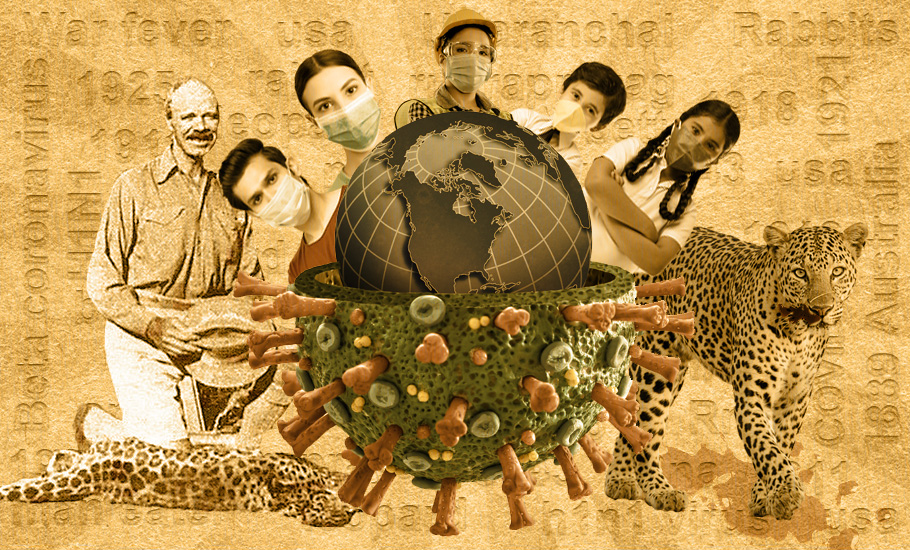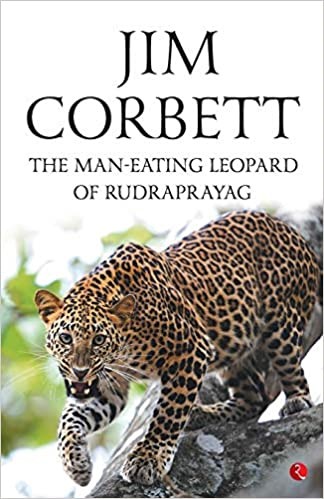
When will COVID end? Rudraprayag's man-eating leopard may have a hint
The Russian Flu in 1889, the myxoma virus that killed hundreds of rabbits in Australia and the Spanish flu, particularly when it struck Rudraprayag, may provide clues on the course of the pandemic

There is a central question dominating the minds of people now, ‘When will all this end? When will it all get normal again?’ All sections of society, be it rich or poor, housewife or entrepreneur, the politician, the common man and women, are all frustrated and all they want is to get back to a normal life.
In this COVID pandemic, the entire world turned upside down. In the midst of this mayhem, we have also had fiercely-fought assembly elections and bloody wars, too. There is no scientific answer to the question as to when the pandemic will end or when it will become endemic. We cannot even claim with confidence if we have reached that stage.
To get some clarity on this, we have to go back into history and understand how different pandemics ended. Let us take a couple of examples from the past:
Human coronavirus OC43
The HCoV-OC43 virus is one of the species known as Beta coronavirus 1. It is a single-stranded RNA virus that enters the host cell by binding to a receptor.
This is probably what caused the Russian flu pandemic in 1889. In those days, without advancement in medicine, it wreaked devastation. Scientists do not know the origin of this virus – it may have come from rodents, and passed on to cattle as intermediate hosts. It may have then moved on to humans, too (fortunately there was no Chinese lab at that time to point fingers to without evidence). This also mutated over a period of time and became less virulent.
At least four genotypes have been identified that can be linked back to this virus. But what happened to this virus after evolution? Well, it is known to be one of the viruses responsible for what we now call the ‘common cold’. Coronavirus has spread all over the globe, causing 10-15 per cent of the common cold cases. It shows seasonal behaviour mainly in the winter months.
Also read: 3 pieces of misinformation are making COVID thrive: WHO
Myxoma virus triggers massive epidemic in rabbits in Australia
 Around the mid-19th century, 12 pairs of rabbits from Europe were shipped to Australia. The myxoma virus, resident among rabbits in South America, caused a cancer among the European rabbits that led to their immediate death. The myxoma virus spread by mosquitos among rabbits was introduced in one locality in Australia and spread rapidly to become a pandemic immediately. The first season killed 99 per cent of the rabbits! The rabbits that survived the disease developed immunity by producing antibodies and were unaffected by later outbreaks of the virus.
Around the mid-19th century, 12 pairs of rabbits from Europe were shipped to Australia. The myxoma virus, resident among rabbits in South America, caused a cancer among the European rabbits that led to their immediate death. The myxoma virus spread by mosquitos among rabbits was introduced in one locality in Australia and spread rapidly to become a pandemic immediately. The first season killed 99 per cent of the rabbits! The rabbits that survived the disease developed immunity by producing antibodies and were unaffected by later outbreaks of the virus.
The immunity they obtained genetically reduced rabbit mortality, and the offspring of the survivors inherited their parents’ resistance. The myxoma virus caused a massive epidemic among European rabbits that had no previous exposure to it. However, both populations experienced genetic changes while adapting to each other: rabbits that survived had increased resistance and surviving virus strains had decreased virulence.
The man-eating leopard of Rudraprayag
 The next virus that struck caused the Spanish flu 100 years ago. It is wrongly attributed to Spain but the origin may well have been Kansas, USA. It was an influenza disease that came through H1N1 virus. One third of the population of the world was affected by it, and nearly 50 million people succumbed. There were four waves of the pandemic, killing mostly youth, unlike the present pandemic in which seniors have been the most vulnerable cohort.
The next virus that struck caused the Spanish flu 100 years ago. It is wrongly attributed to Spain but the origin may well have been Kansas, USA. It was an influenza disease that came through H1N1 virus. One third of the population of the world was affected by it, and nearly 50 million people succumbed. There were four waves of the pandemic, killing mostly youth, unlike the present pandemic in which seniors have been the most vulnerable cohort.
In India, it was known by several names such as ‘Bombay flu’ and ‘War fever’. It was estimated that in India about 17-18 million people died, which was a record number in the world. If we believe the current estimates of death for COVID (not the official numbers), the current fatalities are estimated to be 5 million.
The period between 1911 and 1921 turned out to be the only census decade when the population had actually decreased due to the Spanish flu. Mahatma Gandhi was also affected by the virus. The Hindi poet Suryakanth Tripathi mentions that the ‘Ganga was swollen with dead bodies’ (reminding us of the horrific pictures from Uttar Pradesh in the current pandemic). But when and how did it end?
The main devastation was over by 1921 in most places across the world, including India. But the virus continued to mutate and fatalities continued to be reported for a long time. After several waves of the Spanish flu, the virus got less and less virulent. And this, combined with the improved immune response of the survivors, led to it becoming endemic around 1925.
Also read: 4th Covid wave in India predicted around June 22: IIT-K researchers
Where does the leopard of Rudraprayag enter?
Rudraprayag is a holy place in Uttaranchal, and is the point of confluence of the Alakananda and Mandakini. The rivers continue further down as Alakananda and join Bhagirathi in Devaprayag, to be called Ganga Mai. Then it moves onto Rishikesh.
Many holy places such as Kedarnath and Joshimath are found near Rudraprayag. It is also close to the Corbett National Park. Around 1918, there was a large number of fatalities due to an outbreak of the Spanish flu (local people called it war fever).
Normally, a lot of rituals are conducted when people die among Hindus before cremation. But the numbers were so large, manpower and basic materials like wood fell short. People were forced to limit the rituals and just placed a lamp near the mouth of the body and leave it in the forests.
There was no other way at that time. The bodies became free supply of food for the leopards. Leopards are scavengers and do not hesitate to eat dead animals but they avoid humans. Once in a while, they taste human blood and turn into man-eaters. They started to eat the discarded bodies and the steady supply due to the pandemic kept them satiated. The leopards also did not stray from its territory in the forests and avoided human habitation. But this changed after 1921.
Around that time, people had developed a strong immunity against the virus after acquiring herd immunity. The virus effect was also becoming less virulent. The virus mutated just like now to get a proper host and survive. When the supply of bodies fell, the leopard had no other option but to enter the villages and attack vulnerable humans.
 One such dangerous man-eating leopard was reported in Rudraprayag. Jim Corbett, the well-known British hunter-turned-naturalist, even wrote a book titled The man-eating leopard of Rudraprayag. Since the loss of human life due to the leopard was heavy, he was given the task of hunting the animal down. The search for the leopard was launched and Corbett has penned all the details of the hunt in the book. Between 1921 and 1925, the leopard killed about 200 humans and countless number of animals.
One such dangerous man-eating leopard was reported in Rudraprayag. Jim Corbett, the well-known British hunter-turned-naturalist, even wrote a book titled The man-eating leopard of Rudraprayag. Since the loss of human life due to the leopard was heavy, he was given the task of hunting the animal down. The search for the leopard was launched and Corbett has penned all the details of the hunt in the book. Between 1921 and 1925, the leopard killed about 200 humans and countless number of animals.
The leopard struck such terror in the minds of people that they would not venture out after sunset. This went on for four years. It is alleged that the pattern of the leopard’s attacks closely followed the waves of the pandemic. From the numbers it is clear the pandemic stayed on for a few years. Even attempted cyanide poisoning could not kill the leopard. Finally, it was shot down in 1926. It is amazing that this terror event can actually educate us about the pandemic.
<I thank the interaction with Dr Sithabra Sinha and Dr S. Krishna swamy which inspired me to write this piece>
(The writer is Professor (Retd), Institute of Mathematical Sciences, Chennai.)


